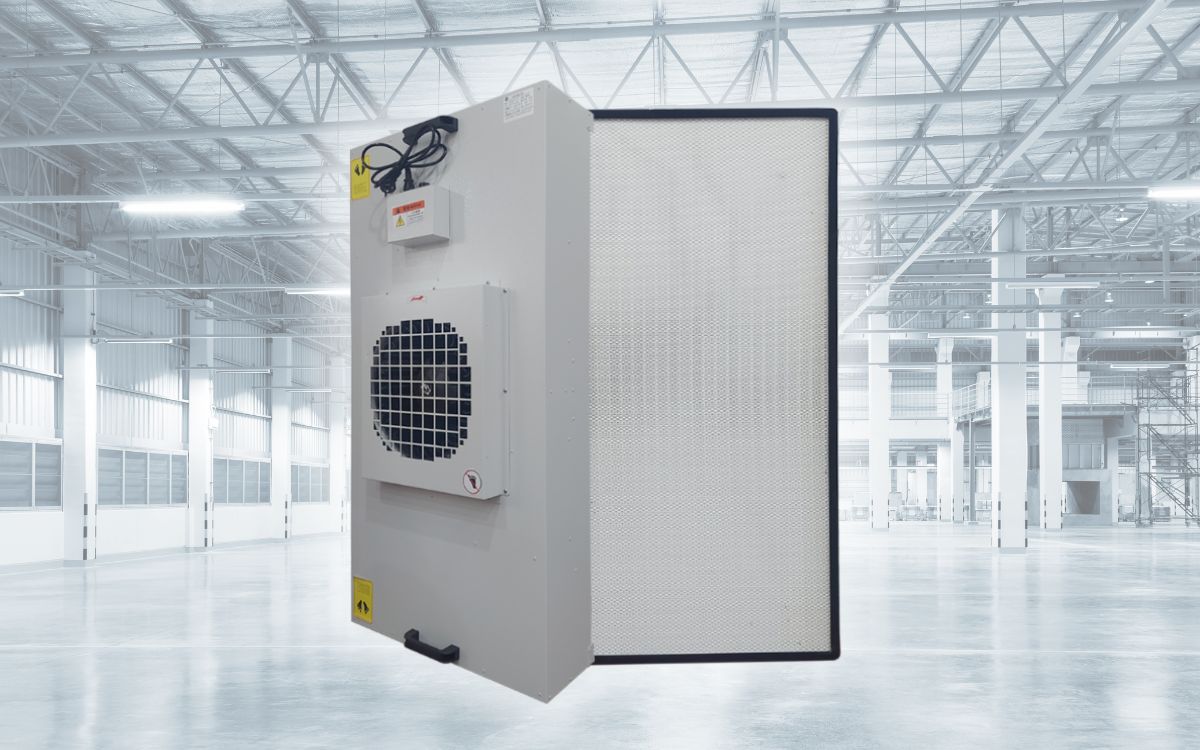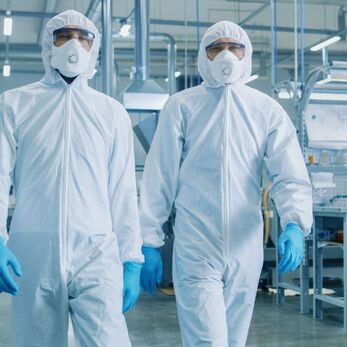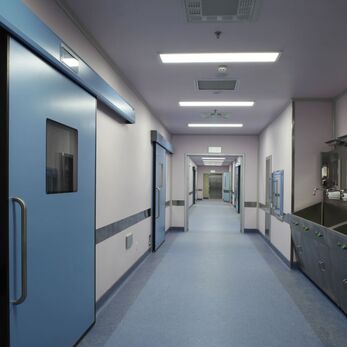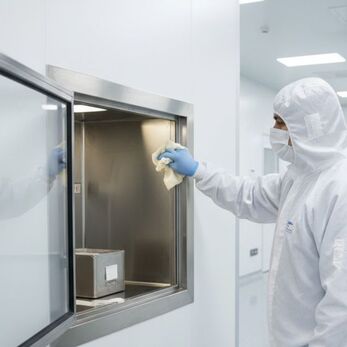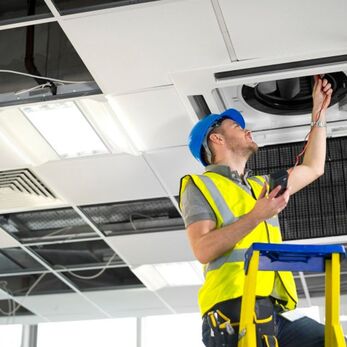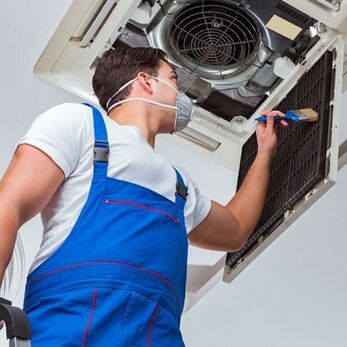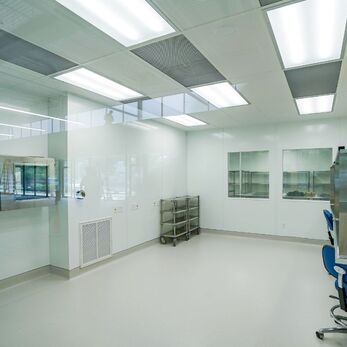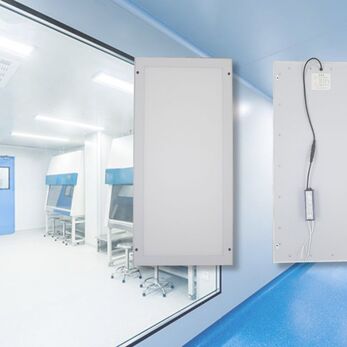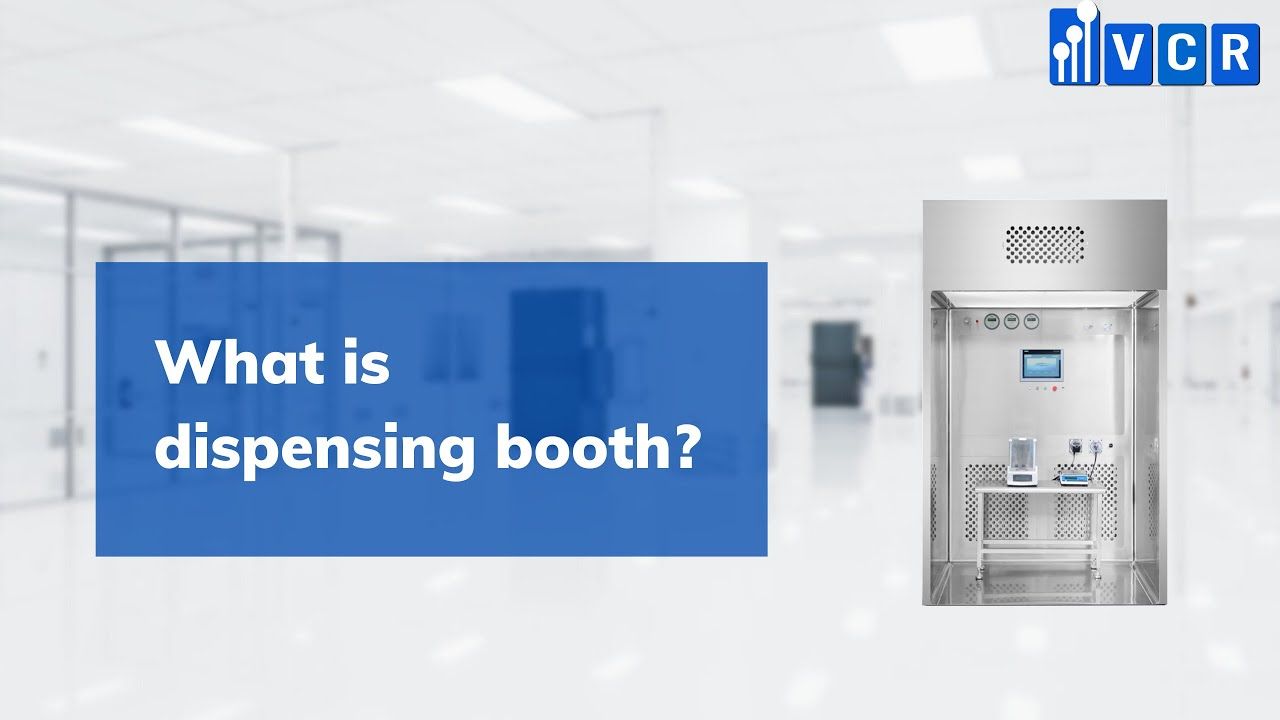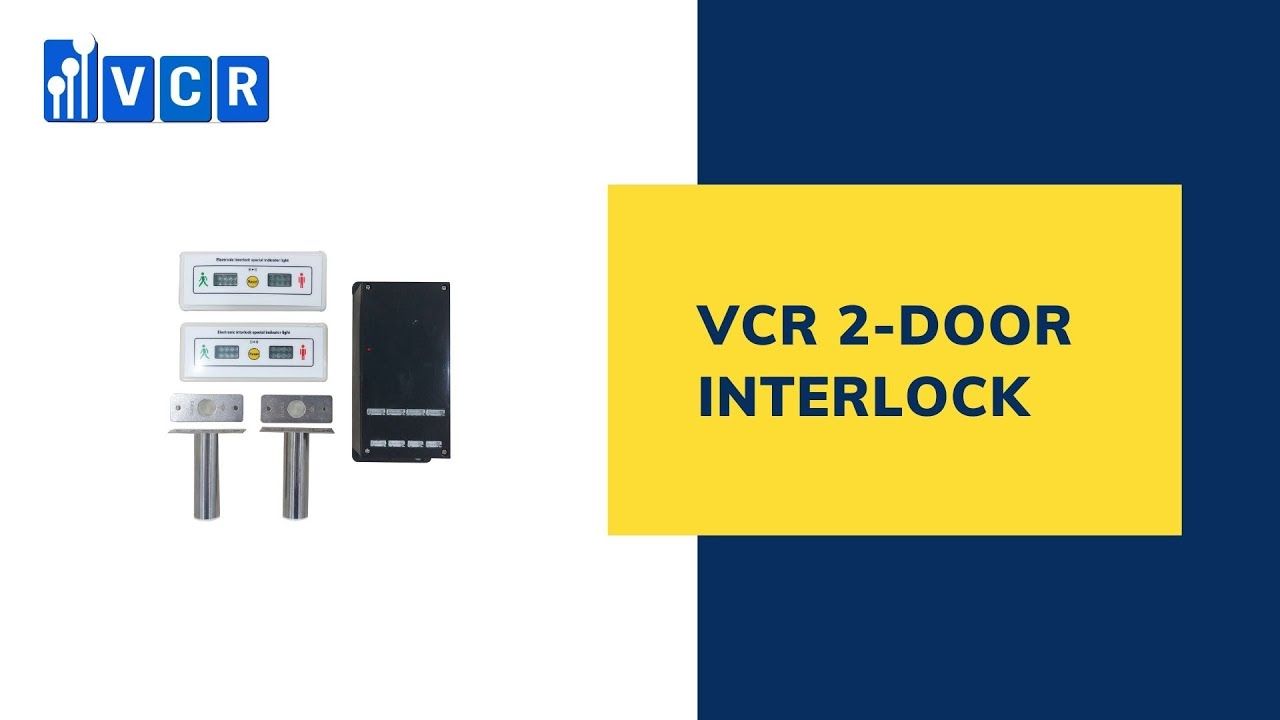Common errors when using asynchronous FFU
Common errors when using asynchronous FFU often come from the difference in wind speed, pressure and operating time between the devices. This makes the air flow in the clean room unstable, causing cross-contamination and wasting energy. This article will analyze the causes and effective solutions.
- 1. What Is Non-Synchronized FFU?
- 2. Signs That Your FFU System Is Not Synchronized
- 3. Serious Consequences of Using Non-Synchronized FFUs
- 4. Causes of Non-Synchronized FFU Operation
- 5. Solutions to Fix and Prevent Non-Synchronized FFU Issues
- 6. Synchronized FFUs - The Right Solution for High-Demand Industries
- 7. Frequently Asked Questions About Non-Synchronized FFUs
- 8. Need Cleanroom FFU Consultation?
When operating a cleanroom system and ensuring stable air flow, the use of non-synchronous Fan Filter Units (FFUs) can lead to a series of technical problems that affect the performance and life of the equipment. So what are the common errors when using non-synchronous FFUs - from pressure differences, fan speed fluctuations, to unusual noise - and how to effectively prevent them? The following article will help you quickly identify common signs, analyze common causes, and provide appropriate solutions when FFUs operate non-synchronously.
1. What Is Non-Synchronized FFU?
What is an FFU?
An FFU (Fan Filter Unit) is an air filtration device integrated with a fan, installed on cleanroom ceilings to create unidirectional laminar airflow. It pushes air through a HEPA/ULPA filter to remove airborne particles and microorganisms.
FFUs are widely used in industries that require high levels of cleanliness, such as:
Pharmaceutical manufacturing (GMP)
Electronics and semiconductor assembly (ISO 5-6)
High-end cosmetics and food production
What is a synchronized FFU system?
A synchronized FFU system means:
- Air velocity across all FFUs is uniform
- Output pressure is balanced and harmonized
- All FFUs are operated according to pre-set programs via a central control system
Such a system ensures stable airflow, energy efficiency, and optimal filtration performance.
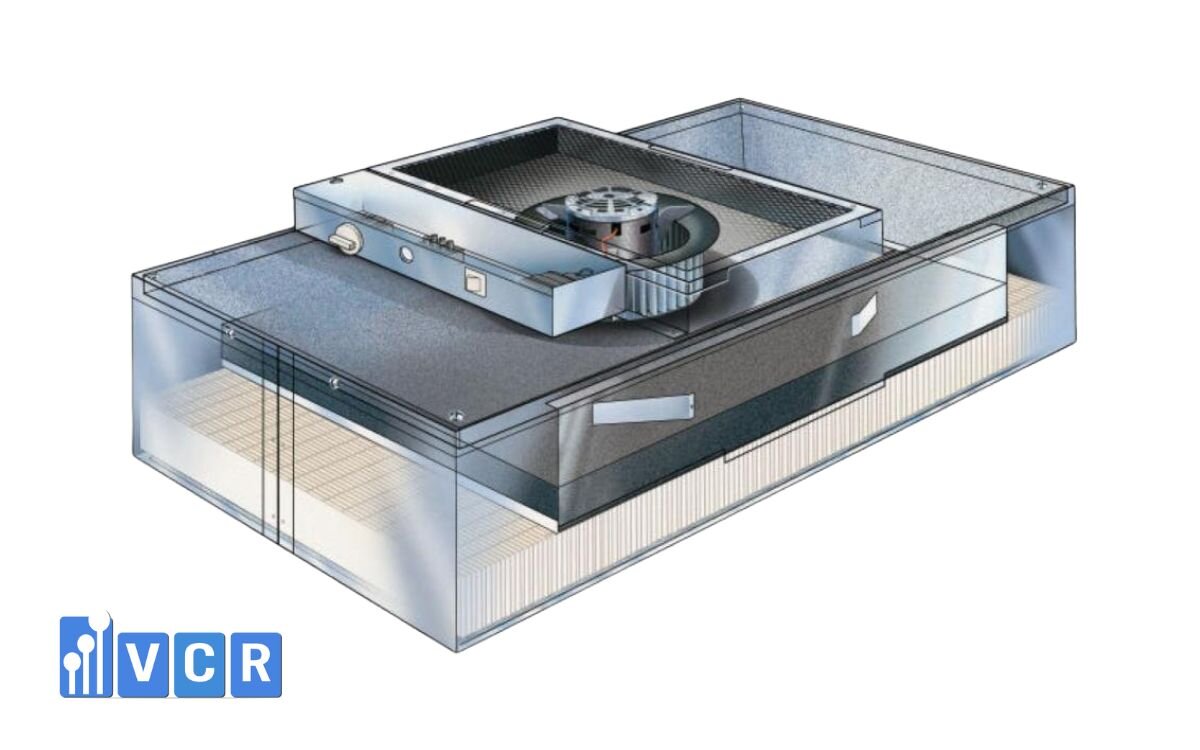
Non-synchronized FFU - A common scenario
In practice, many factories operate with non-synchronized FFUs, especially when:
- Units are installed in phases and sourced from different suppliers
- No central control system is implemented
- The system is not inspected regularly over time
Common signs include:
Some FFUs produce louder noise than others
Uneven or swirling airflow in some areas
Perceptible “inconsistency” in air velocity across the room
These symptoms indicate the airflow is no longer stable, which may severely impact cleanroom performance.
See more: What is AHU? Structure and operating principle of AHU system
2. Signs That Your FFU System Is Not Synchronized
When FFUs are not synchronized, abnormal conditions soon appear, compromising the cleanroom environment. Here are the most common signs observed by technicians and QA/QC teams:
1. Uneven airflow - turbulent zones appear
A standard ISO cleanroom requires stable, evenly distributed laminar airflow. If FFUs are not synchronized:
- Some zones experience high air velocity while others are weak
- Turbulent airflow may develop
- Temperature differences may be felt in different areas of the room
2. Unstable pressure differential between rooms
Cleanrooms rely on pressure differentials to control airflow direction and prevent cross-contamination. Non-synchronized FFUs may cause:
- Imbalance in room-to-room pressure (e.g., airlocks, weighing rooms, critical zones)
- Positive or negative pressure drifting from the setpoint
- Doors becoming hard to open/close due to pressure abnormalities
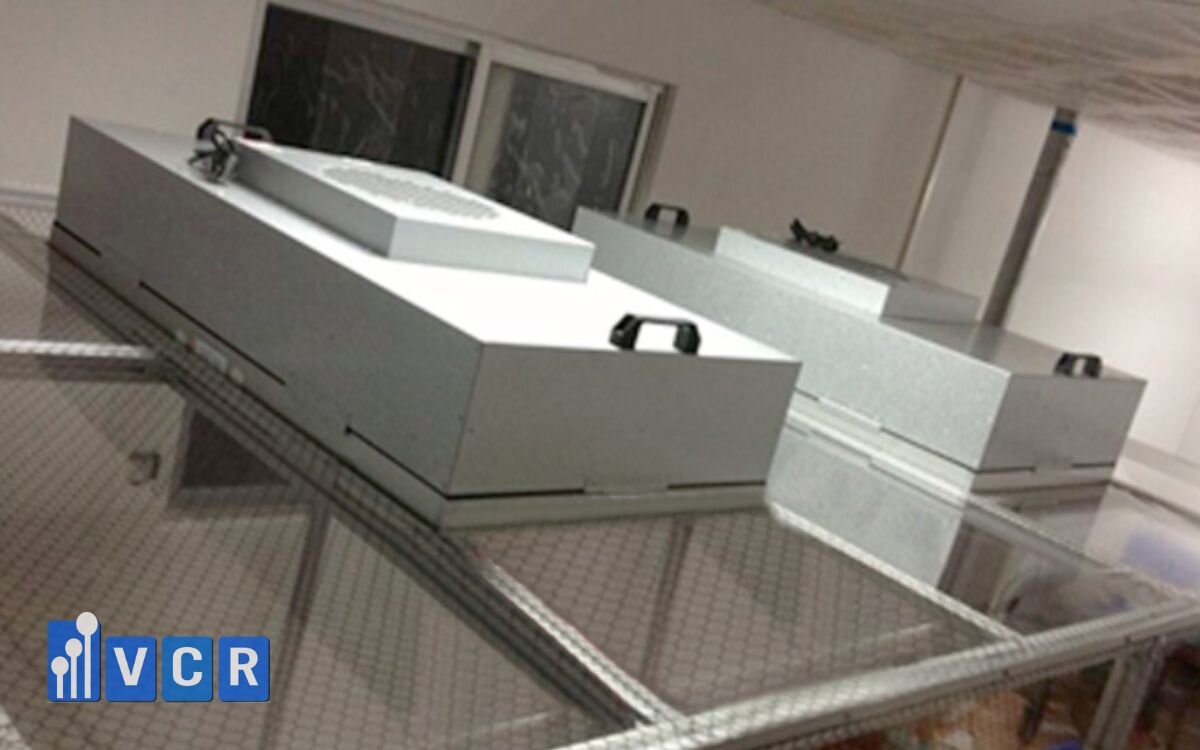
3. Increased airborne particles - localized cross-contamination risk
When airflow speed and pressure are inconsistent:
- Reversal of airflow may occur, drawing particles and microbes backward
- Floating particles are not fully pushed down to return vents
- Particle accumulation in corners, door frames, or wall-floor junctions is common
This is especially dangerous in pharmaceuticals and food production, where even minor contamination may result in GMP violations.
4. Noise or vibration from FFUs
FFUs are typically quiet. However, with non-synchronized operation, you may hear:
- Louder noise from certain units
- Ceiling vibration when multiple FFUs run at inconsistent speeds
- Uneven or fluctuating fan sound
This indicates an urgent need for maintenance, as internal motors or speed controllers may be malfunctioning.
See more: The importance of humidity control in cleanroom
3. Serious Consequences of Using Non-Synchronized FFUs
Non-synchronized FFUs not only reduce operational efficiency but also pose serious risks to cleanroom quality and production safety.
|
Issue |
Impact on Cleanroom |
|
Turbulent airflow |
- Swirling, uneven airflow - Reduced HEPA efficiency - Lower ISO cleanroom classification, risk of particle count exceeding limits |
|
Increased energy consumption |
- Some FFUs overcompensate to balance pressure - Efficiency loss, wasted energy - Shortened motor and controller lifespan |
|
Cross-contamination risk |
- Reversed airflow in weak zones - Particles and microbes may recirculate - Critical in GMP-regulated industries such as pharma and food |
|
Pressure imbalance |
- Loss of proper pressure gradient - Air leakage through gaps and door frames - May lead to equipment damage due to abnormal pressure load |
These consequences may not appear immediately, but they accumulate over time, significantly degrading cleanroom stability-particularly in GMP or ISO 14644 compliant environments.
4. Causes of Non-Synchronized FFU Operation
FFU systems are only effective when all units operate with consistent parameters. In reality, many facilities face non-synchronization issues due to the following reasons:
1. Mixing different FFU brands or models
Each brand varies in fan blade design, motor type, controller, and airflow specifications
Even with similar sizes, differences in performance create inconsistent output
This disrupts overall airflow dynamics
Recommendation: Use the same brand and model for all FFUs in a zone. If replacements are needed, do so in batches or by cluster
2. No central control unit (CCU)
Many systems use standalone switches or simple wiring
Lack of centralized control means:
- Airspeed, timing, and operating modes are not unified
- Deviations in performance go undetected
Solution: Implement a centralized FFU control system (can include remote monitoring, real-time alerts)
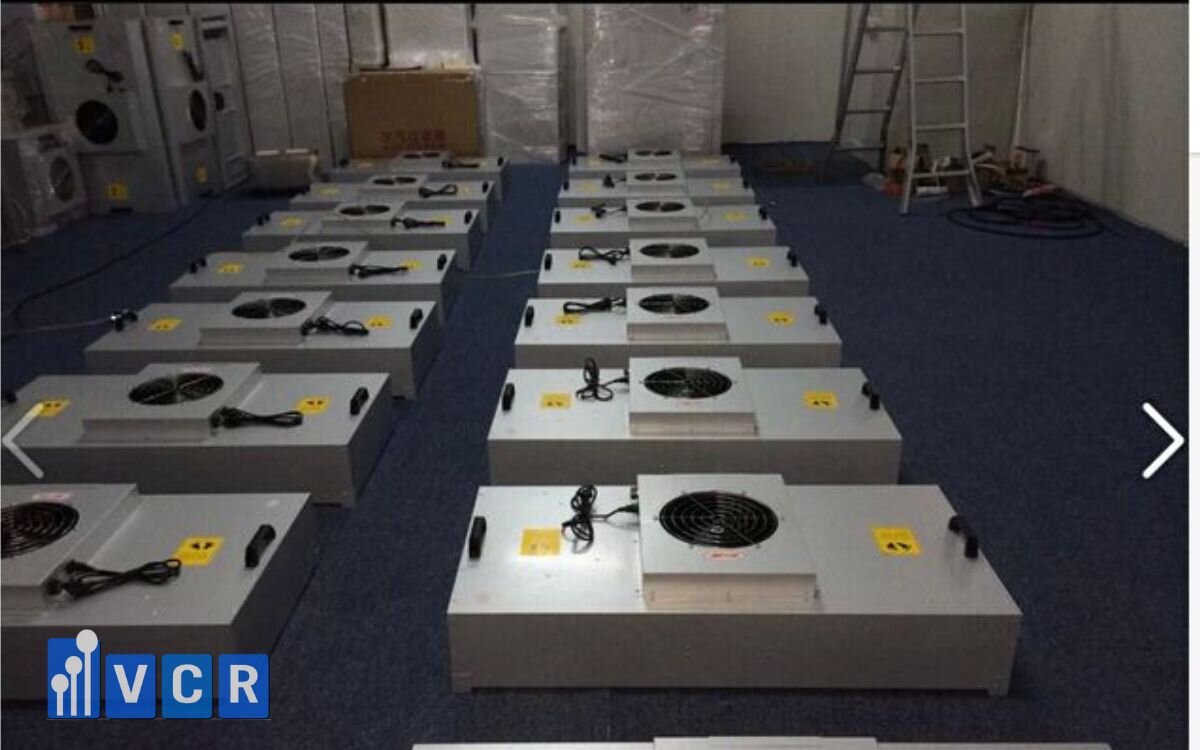
3. HEPA filter age or condition mismatch
A clogged HEPA filter increases resistance, forcing fans to work harder or become inefficient
Causes imbalance in airflow among units
Suggestion: Plan coordinated HEPA replacements by cluster, not individually.
4. No periodic calibration
Over time, components wear out and dust buildup alters performance
Without routine calibration, system balance degrades
GMP recommendation: Calibrate FFU systems every 6-12 months, especially for pharma or ISO 5-6 cleanrooms.
See more: Comparing airlflow standards: ISO 14644 vs ASHRAE
5. Solutions to Fix and Prevent Non-Synchronized FFU Issues
To ensure stable FFU operation and optimal filtration performance in cleanroom environments, the following technical solutions should be implemented consistently:
1. Use FFUs with matching specifications and from the same manufacturer
Prioritize using the same model and supplier across the entire cleanroom zone
Ensure all FFUs share the same:
- Rated airflow (m³/h)
- Fan speed
- HEPA/ULPA filter efficiency
This minimizes the risk of operational discrepancies from the design phase.
2. Implement a central control system (Master Control Unit)
Allows programming and synchronization of airspeed, pressure, and operational time for all FFUs
Enables easy device status monitoring via supervisory software
Can be integrated with alarms for parameter deviation
Some control systems support integration with BMS or SCADA-ideal for GMP or ISO-compliant facilities.
3. Schedule maintenance and replace HEPA filters in batches
FFUs should be routinely checked for:
- Filtration performance
- Filter clogging level
- Fan speed
HEPA filters should be replaced in batches or by zone to avoid resistance imbalance caused by uneven filter conditions.
4. Monitor airflow using sensors and software
Use airflow sensors and differential pressure sensors to:
- Detect abnormal zones (e.g., weak airflow, pressure deviation)
- Automatically adjust fan speeds to maintain consistent airflow
Monitoring software allows real-time tracking, reporting, and operational trend analysis.
This is an advanced solution enabling the cleanroom to "self-balance" over time-particularly beneficial for pharmaceutical, semiconductor, and ISO 5-6 production facilities.
6. Synchronized FFUs - The Right Solution for High-Demand Industries
In modern manufacturing sectors, simply installing FFUs is not enough to maintain a compliant cleanroom environment. The FFUs must be synchronized-from airflow rates to real-time operations-to ensure absolute stability under stringent requirements.
Industries That Require Synchronized FFUs
1. Pharmaceuticals - strict GMP compliance
Cleanrooms in pharma must tightly control airflow, pressure, and microbiological contamination
Any cross-contamination may result in GMP violations or product recalls
Synchronized FFUs help:
- Maintain differential pressure between zones (e.g., weighing rooms, airlocks, packaging areas)
- Distribute airflow evenly in operating zones
2. Semiconductors and electronics - ultra-clean ISO 5-6 environments
- Production processes are highly sensitive to static electricity and nanoscale particles
- FFUs must operate uniformly to maintain unidirectional airflow
Non-synchronized FFUs can cause product defects or lower yield rates.
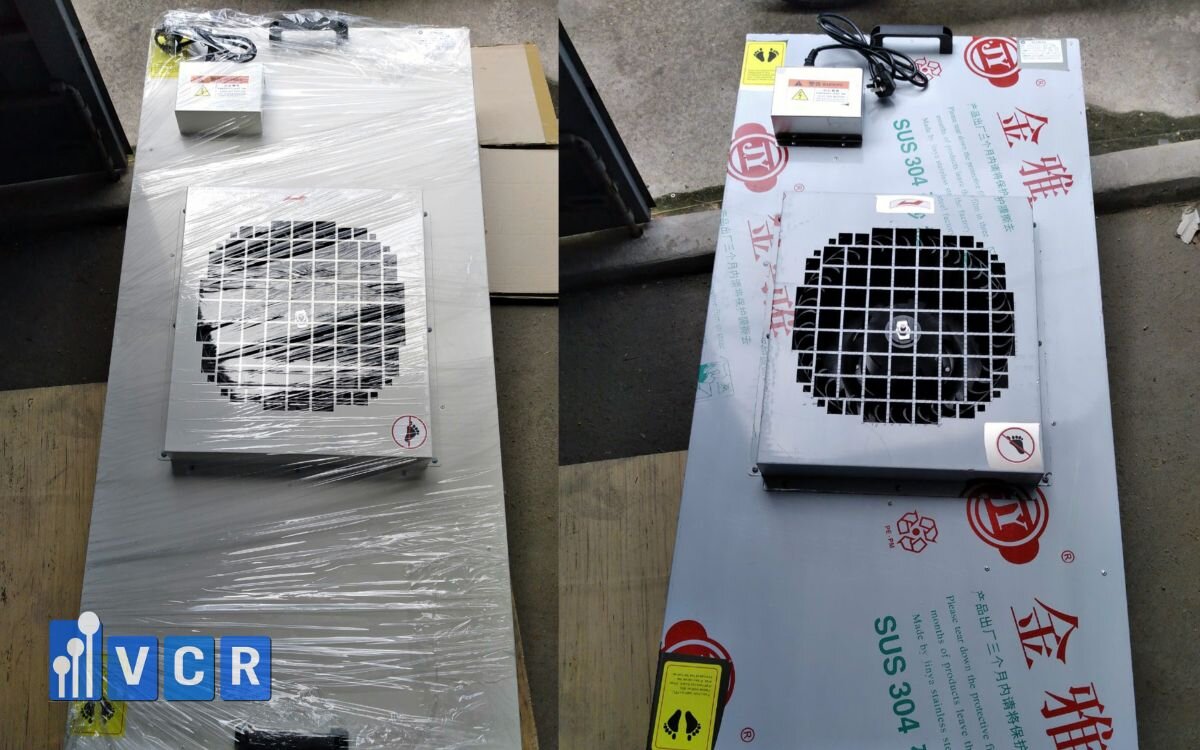
3. High-end cosmetics - visual and contamination control
- Filling and packaging lines require a dust-free, odor-free cleanroom environment
- Synchronized FFUs help reduce turbulence and the risk of microdust or fiber contamination
Solution: Centralized Control FFU System - Total Synchronization
Modern systems now integrate centralized control units that offer:
|
Function |
Specific Benefit |
|
Synchronized fan speed |
Ensures all FFUs run at the same speed - consistent airflow |
|
Zone control |
Easily divide control by functional area |
|
Error detection & alerts |
Identify FFUs with speed deviation, shutdown, or overload |
|
BMS/SCADA integration |
Connects to smart factory operation systems |
7. Frequently Asked Questions About Non-Synchronized FFUs
1. Can I use different types of FFUs in the same cleanroom?
→ Not recommended.
Mixing FFUs from different manufacturers can lead to discrepancies in:
- Airflow output
- Filter resistance
- Fan speed
This causes airflow imbalance, turbulence zones, and may compromise ISO classification and filtration effectiveness.
2. How often should FFU synchronization be checked?
→ Every 6 months on average or according to the cleanroom's maintenance schedule.
Regular checks help:
- Detect FFUs operating out of spec
- Rebalance the airflow system
- Ensure consistent performance-especially critical in pharma and electronics sectors
3. Can non-synchronized FFUs damage equipment?
→ Yes.
Potential consequences include:
- Ceiling vibrations weakening FFU mounting
- Local pressure imbalances causing fans or filters to operate beyond spec
- Premature FFU failure or reduced filtration performance
Repair costs often exceed the cost of routine inspections.
8. Need Cleanroom FFU Consultation?
Don’t let non-synchronized FFUs reduce your facility’s performance and cleanroom classification.
Inspect - Calibrate - Synchronize your entire FFU system with the VCR technical team.
We provide:
- Tailored centralized FFU control solutions by industry
- GMP, ISO 14644 compliance
- Full technical support and consultation
Contact VCR now for a free consultation.
Hotline: 090.123.9008
Email: [email protected]
Website: https://vietnamcleanroom.com/
Diep VCR






